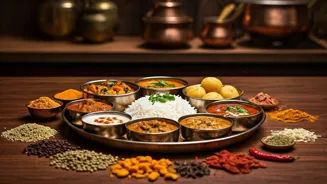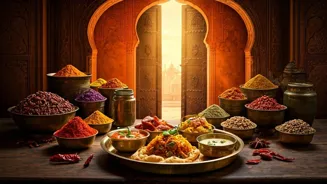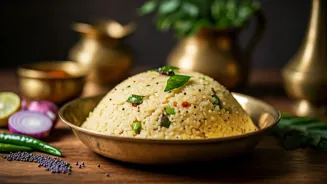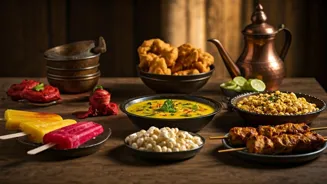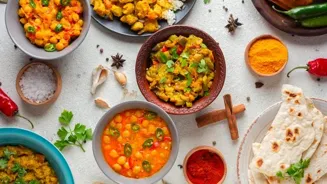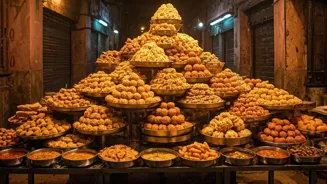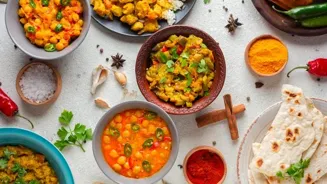Unravel the Spice Route's Influence on Indian Cuisine - a culinary journey of trade, innovation, and cultural exchange. Explore more!
For centuries, the fragrant allure of Indian spices has captivated the world.
But did you know that the very essence of Indian cuisine, its diverse flavours and unique ingredients, is deeply intertwined with the historic Spice Route?
This ancient network, more than just a path for trade, served as a culinary melting pot, introducing new ingredients and techniques that forever transformed the way Indians cooked and ate.
From the humble potato to the vibrant chilli, the Spice Route's legacy is etched in every dish, every flavour, telling a story of cultural exchange and culinary innovation.
The Spice Route: India's pivotal role in culinary exchange
The Spice Route wasn't a single, defined path but rather a complex web of sea and land routes connecting the East with the West. India, strategically located at the heart of this network, became a crucial hub for the exchange of goods, ideas, and most importantly, culinary influences.
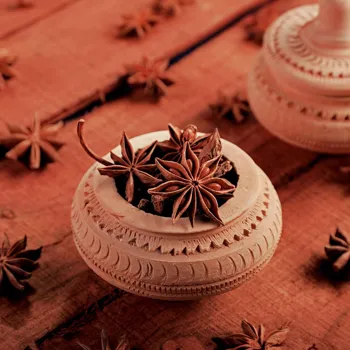
Traders from distant lands like China, Persia, Arabia, and Europe, flocked to Indian ports, bringing with them a treasure trove of ingredients unknown to the subcontinent. These included not just spices, but also fruits, vegetables, and even cooking methods.
The availability of these new ingredients spurred creativity among Indian cooks, leading to experimentation and the birth of new dishes.
Spice Route introduced potatoes and tomatoes to Indian cuisine, transforming dishes
One of the most significant contributions of the Spice Route was the introduction of new vegetables. The potato, for instance, originally from South America, travelled to India via Portuguese traders.
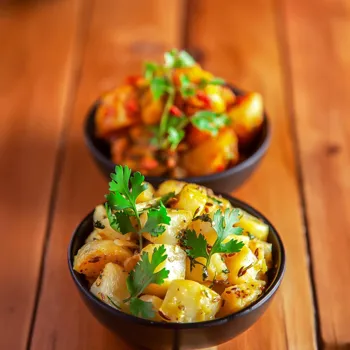
It slowly integrated into the Indian diet, specifically in the North like Aloo paratha and Aloo sabzi. Another gift from the New World was the tomato, similarly introduced by the Portuguese.
Indian cooks, initially hesitant, found the tomato's tangy zest to be a perfect complement to their spicy curries, adding depth and richness to dishes that continue to be popular today. These ingredients transformed the Indian food landscape greatly.
Spice Route shaped Indian cuisine, introducing techniques and flavors
The influence of the Spice Route extended beyond mere ingredients. Cooking techniques also travelled alongside the trade routes. For example, the Persian influence on Indian cuisine is evident in the use of dry fruits and nuts and the emphasis on slow cooking and layering of flavours.
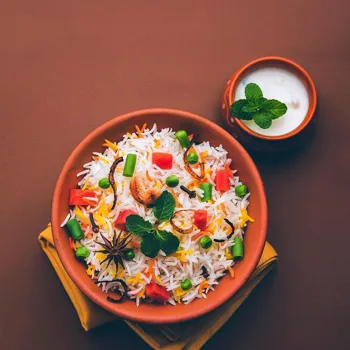
Dishes like Biryani, with its fragrant rice and spiced vegetables, bear testimony to this culinary exchange. Similarly, Central Asian techniques of bread making found their way to India, resulting in the variety of flatbreads that are now an integral part of Indian meals.
Foreign traders introduced chillies to India, impacting Indian cuisine
The impact of foreign traders on the Indian palate is also evident in the introduction of certain spices. Chillies, initially from South America, were brought to India which was accepted and widely used in Indian foods. Different parts of India welcomed the spice very differently.
In the south, it was widely used whereas in north it was not as used, and other options were explored. However, the spices are widely appreciated and loved by people.
Spice Route shapes Indian cuisine through trade's culinary fusion
The Spice Route's impact on Indian cuisine is a vibrant example of how trade can foster culinary innovation. It is a testament to the resourcefulness of Indian cooks. The history is evident of how trading routes can lead to exchange cultural values among the people.
From the introduction of new vegetables to the adaptation of foreign cooking techniques, the Spice Route has left an indelible mark on Indian food.
As we savour the diverse flavours of Indian cuisine today, we are, in essence, tasting the legacy of the ancient trade routes that brought the world to India's doorstep.
